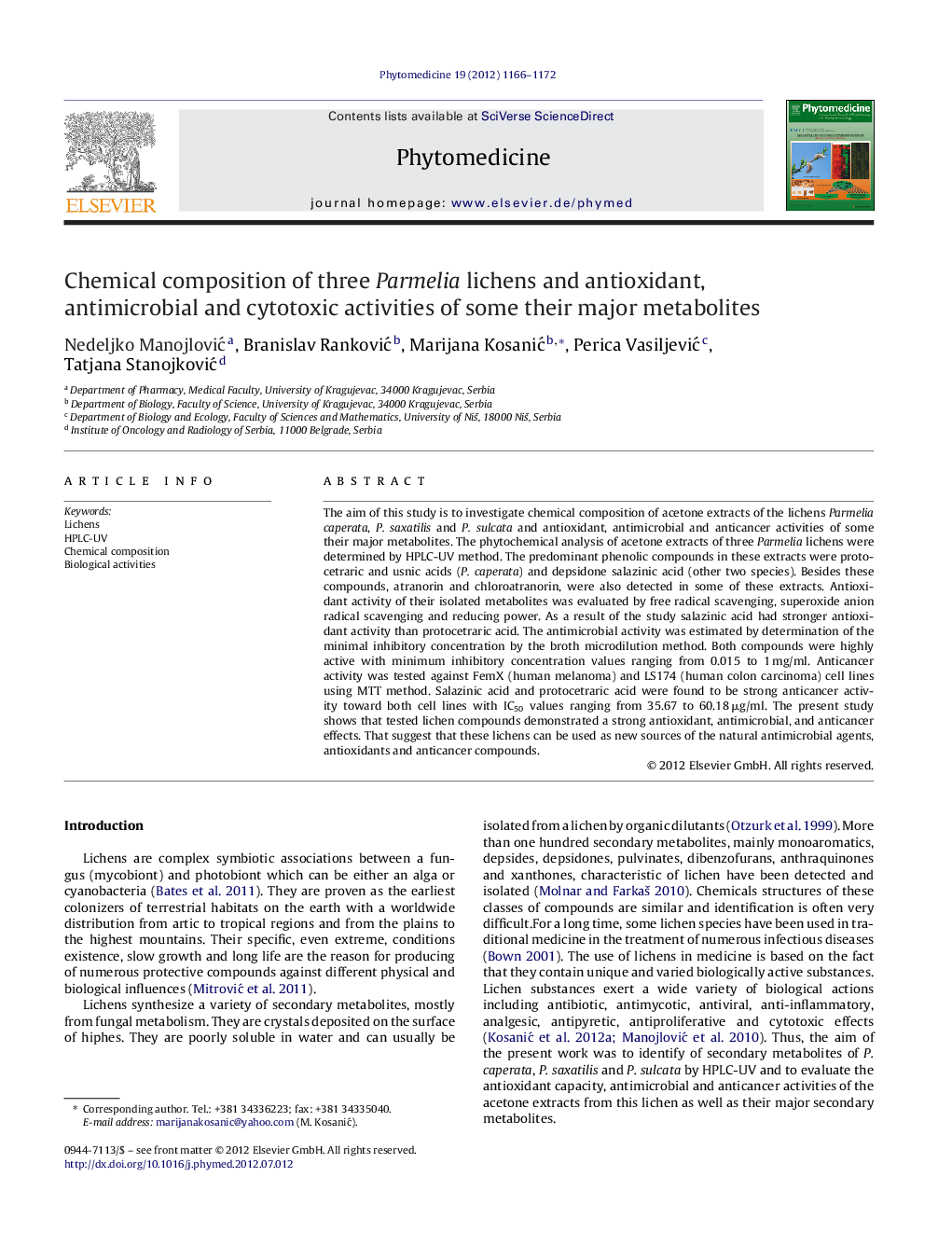| کد مقاله | کد نشریه | سال انتشار | مقاله انگلیسی | نسخه تمام متن |
|---|---|---|---|---|
| 5816759 | 1116160 | 2012 | 7 صفحه PDF | دانلود رایگان |
عنوان انگلیسی مقاله ISI
Chemical composition of three Parmelia lichens and antioxidant, antimicrobial and cytotoxic activities of some their major metabolites
دانلود مقاله + سفارش ترجمه
دانلود مقاله ISI انگلیسی
رایگان برای ایرانیان
کلمات کلیدی
موضوعات مرتبط
علوم زیستی و بیوفناوری
بیوشیمی، ژنتیک و زیست شناسی مولکولی
بیوشیمی بالینی
پیش نمایش صفحه اول مقاله

چکیده انگلیسی
The aim of this study is to investigate chemical composition of acetone extracts of the lichens Parmelia caperata, P. saxatilis and P. sulcata and antioxidant, antimicrobial and anticancer activities of some their major metabolites. The phytochemical analysis of acetone extracts of three Parmelia lichens were determined by HPLC-UV method. The predominant phenolic compounds in these extracts were protocetraric and usnic acids (P. caperata) and depsidone salazinic acid (other two species). Besides these compounds, atranorin and chloroatranorin, were also detected in some of these extracts. Antioxidant activity of their isolated metabolites was evaluated by free radical scavenging, superoxide anion radical scavenging and reducing power. As a result of the study salazinic acid had stronger antioxidant activity than protocetraric acid. The antimicrobial activity was estimated by determination of the minimal inhibitory concentration by the broth microdilution method. Both compounds were highly active with minimum inhibitory concentration values ranging from 0.015 to 1 mg/ml. Anticancer activity was tested against FemX (human melanoma) and LS174 (human colon carcinoma) cell lines using MTT method. Salazinic acid and protocetraric acid were found to be strong anticancer activity toward both cell lines with IC50 values ranging from 35.67 to 60.18 μg/ml. The present study shows that tested lichen compounds demonstrated a strong antioxidant, antimicrobial, and anticancer effects. That suggest that these lichens can be used as new sources of the natural antimicrobial agents, antioxidants and anticancer compounds.
ناشر
Database: Elsevier - ScienceDirect (ساینس دایرکت)
Journal: Phytomedicine - Volume 19, Issue 13, 15 October 2012, Pages 1166-1172
Journal: Phytomedicine - Volume 19, Issue 13, 15 October 2012, Pages 1166-1172
نویسندگان
Nedeljko ManojloviÄ, Branislav RankoviÄ, Marijana KosaniÄ, Perica VasiljeviÄ, Tatjana StanojkoviÄ,